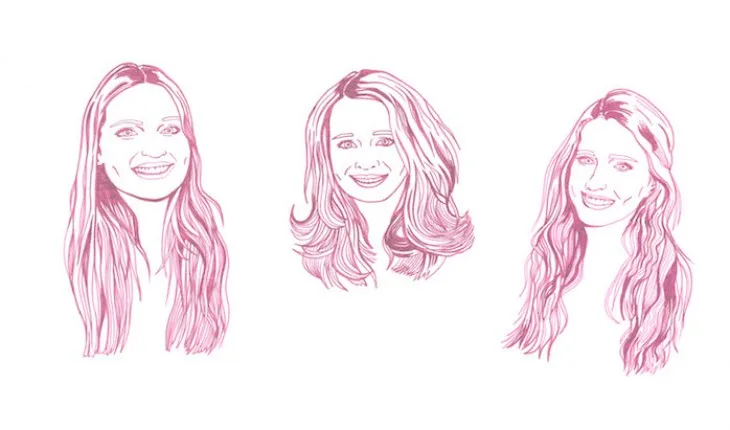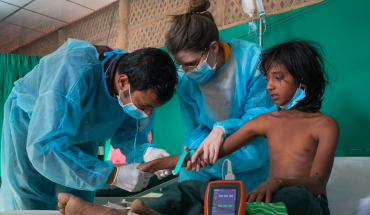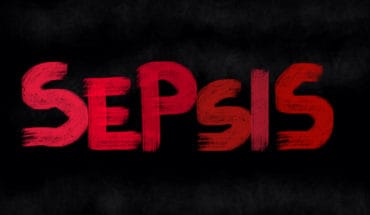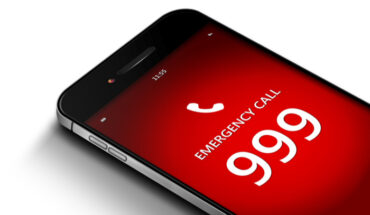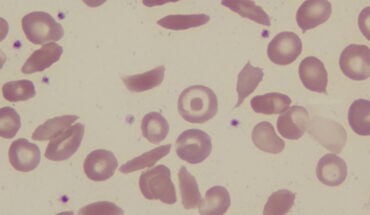Murmurs, crackles, oedema, thrills, shifting dullness, liver flap, spoon nails – the list of clinical signs goes on and on, yet learning them is not as easy as memorising the terms. Now that I am in my clinical training I have finally experienced the joy of seeing these signs for the first time, and also see how impossible it is to simply read about them.
It is hard to explain to people the excitement of truly hearing those illusive ‘crackles’ in a lung. And how it is even more exciting to identify them for yourself and then fit those little sounds – the groans of a sick body – into a broader picture. A crackle is never just a crackle. Is it coarse or fine? Widespread or localised? And even then the detective work has only just begun. You must step back and look at the patient as a whole. Examine their hands, their eyes, their whole body and then fit these disparate elements into their story. No sign can be a substitute for the patient’s own account of their illness. And learning to interpret all of these subtleties is like learning a different language, one which can take a lifetime to perfect.
Yet the pressure to know things can sometimes stop us experiencing them. Days on the wards are long and as a student it can feel as though one is simply propping up a wall, or worse getting in the way. Slinking back to the library and the relative safety of a textbook can often feel like the path of least resistance. And more than that it can seem like a quicker way to gain information, you have, after all, to listen to a lot of hearts to hear a murmur. Yet medicine happens in the real world, not in a textbook. It deals with people, with sights and sounds and smells. It is tactile. The description of a pulse is nothing like the feeling of it under your fingers, and finding a patient’s pulse, admittedly a very rudimentary skill, still feels to me like a small victory.
Learning to examine a patient has, up to now, felt like following a script. I would run through the motions, yet forget to really look. I suppose I was focusing on myself and what I was doing and not what was in front of me. This caught me out in a recent exam when I was ‘looking’ at a patient’s chest but not ‘seeing’ the blindingly obvious scar running across it, so concerned was I with appearing to do it correctly. This has been one of the most valuable lessons I have yet learned, and no textbook could have taught it.
I am growing to see my education as a process of sharpening my senses. Becoming a detective and actively noting what I see in front of me. Where before a walking stick by a patient’s bedside would have been little more than simply a walking stick, now it is a question mark. Why is it there? What does it symbolise about the person before me?
Of course I am not going to surrender my textbooks just yet, the knowledge they contain is invaluable. But I am learning to see them as part of a bigger picture. A textbook can tell you what signs to look for but you will only find them in a real patient. And more than that only a patient can tell you its true significance. A bloated, fluid filled belly is a sign of liver disease yes, and feeling its dullness under your fingers is something you can’t emulate elsewhere. But it may also be a sign of a lifetimes struggle with alcohol dependence, of difficulty and worry, perhaps a sign of a life drawing to a close, and to find out what it really means you need to look up from your books, from your examinations and your notes and listen to the person in front of you.
- A Blind-Spot - 17th July 2016
- Being A Patient – Should I tell my doctor that I am a medical student? - 1st April 2016
- It’s a Sign – What a Textbook Can’t teach - 20th March 2016

